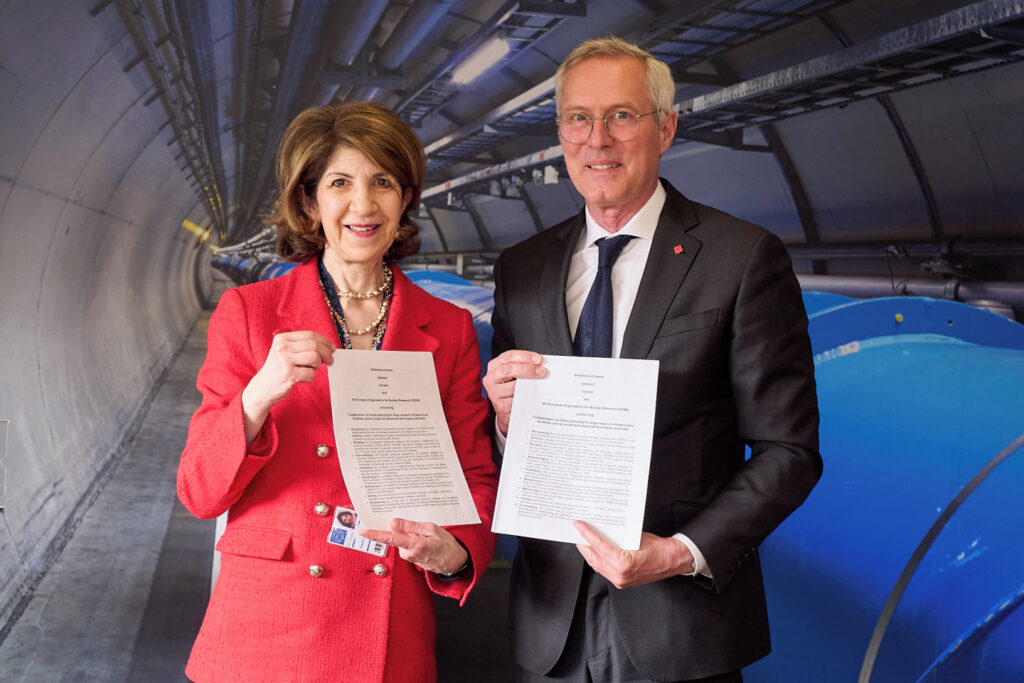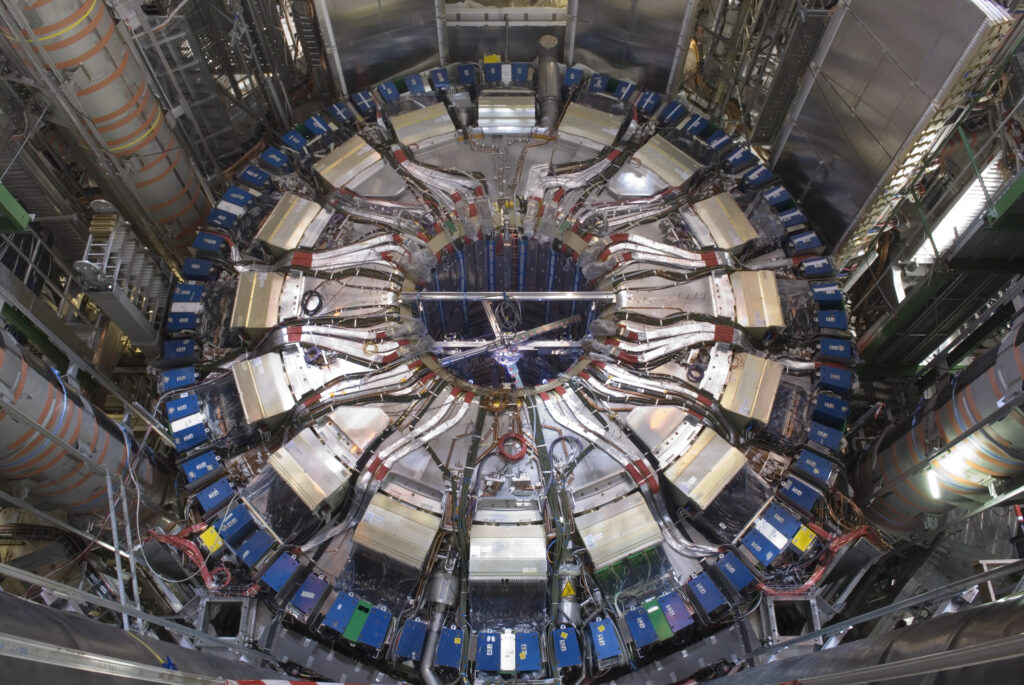(with notes from the original CERN story)
Canada has signed a joint Statement of Intent with CERN concerning future planning for large research infrastructure facilities, and novel and advanced techniques and tools. The Statement was signed by CERN’s Director-General, Fabiola Gianotti, and Canada’s Deputy Minister of Innovation, Science and Economic Development, Philip Jennings.

Director-General of CERN, Fabiola Gianotti (left), and His Excellency Mr. Patrick Wittmann, Ambassador of Canada to Switzerland and Liechtenstein (right), after signing copies of the joint Statement of Intent between CERN and Canada (image: CERN)
The Statement details how CERN and Canada intend to strengthen their collaboration in the planning of future projects, including the ongoing Future Circular Collider (FCC) studies, and to expand cooperation on innovative technologies, with a particular focus on the three technology pillars of the field – accelerators, detectors and computing.
With a special note about how fundamental research at major facilities and open science drive technological development and innovation in many domains of society, the Statement acknowledges Canada’s strong contributions to the forthcoming High-Luminosity Large Hadron Collider (HL-LHC). It also establishes that, should the CERN Member States determine that the FCC is likely to be CERN’s next world-leading research facility following the HL-LHC, Canada intends to collaborate on its construction and physics exploitation, subject to appropriate domestic approvals.
Canada’s contributions to the LHC and to ATLAS, one of the collider’s four core detector complexes, span decades. Working primarily through TRIUMF, as well as TRIUMF’s university member network and the ATLAS-Canada collaboration, Canada has contributed a variety of components and other infrastructure critical to LHC science, including TRIUMF-built accelerator technologies , detector apparatus for ATLAS, and the establishment of one of ten international Tier-1 data centres for the ATLAS detector’s distributed computing network, part of the globe’s largest and most advanced scientific computing grid.
In 2012, the ATLAS experiment, along with the CMS experiment, announced the discovery of a new particle consistent with the Standard Model Higgs boson, the particle theorized to attribute mass to matter. This discovery was highlighted in the 2013 Nobel Prize in Physics, which was awarded to Peter Higgs and François Englert for the theoretical discovery of a mechanism that contributes to understanding the origin of mass in subatomic particles – a mechanism later confirmed by the ATLAS and CMS experiments. ATLAS’ many contributions to advancing our understanding of the Universe were recently recognized with the 2024 Breakthrough Prize in Fundamental Physics, which was awarded to ATLAS and its sister experiments ALICE, CMS and LHCb.
Looking forward, TRIUMF will also serve as Canada’s conduit for contributing to the High Luminosity LHC upgrades, a suite of accelerator and detector upgrades that will enhance the rate of particle collisions by a factor of at least five. You can learn more about TRIUMF’s contributions to the LHC and ATLAS here, and the TRIUMF Tier-1 Data Centre here.




